Energy Projects
The primary way of harnessing energy is in the production of electricity, although we can extract heat directly for the purpose of heating water or our homes.
There are two sides to energy projects (a) producing sustainable energy and (b) using less energy.
ELECTricity
There are various ways in which we can generate electricity in a sustainable way - but none of them are very cheap. We can use solar, wind, water, biomass and a few others.
Using any of these in a domestic setting is a commitment, with the most common (because it is thesimplest) being solar.
heat
The direct heating of water or a building can also be done through solar, air source or ground source pumps etc. (Obviously, less directly, you could use your generated electricity to heat these things too).
The counter to this is that we can draw less energy, if we manage to insulate our houses better - which will look at too.
Insulation
Before you try to generate any of your own electricity or get greener power into your home - a first port of call is to waste less. The primary waste of energy in a home is poor insulation, so take a look at this straight away. We look further at this in our "Carbon Projects" page.
ELectricity supply
Almost everyone is connected to the mains supply. This means we are buying at least some of our supply from a company. Traditionally, most people have bought their electricity from the Big 6. However, there are many more players in the market now and this has changed the market to an extent.
From our perspective, one of the great innovations in recent years is that you can make your energy bills greener. Some of the Big 6 now allow this too.
From a personal point of view, we wanted to go for an energy plan that allowed us to know that our electricity was from renewable sources. After looking around, we decided to use Octopus Energy. We have no affiliation to them and get no money for saying this - but we felt they provided clean energy at a fair price. Their renewable promise is that for every KwH of energy we use, they will buy an equal amount from a renewable supplier. They are partnered with a number of solar producing companies and the rest is from renewable sources (certified by OfGem).
There are a number of other options similar to this on the market, so shop around a find one that is best for you.
Electricity generation
Producing our own electricity is even better than buying from a green supplier, as you know the actual energy you are using is green (with a supplier you'll be using mixed energy - their promise is to feed back into the system the amount you use from renewables).
However, this, without doubt, has been our least successful venture to date.
We bought a battery, a 40W solar panel and all the wires and gizmos to go with it. Setting it up was relatively straightforward, following the instructions given (and also Googled) and all seemed to be fine.
However, essentially, no electricity was generated and when the initial charge on the battery went dead - the lights stopped turning on.
We were trying to use this to power lights and music in our outbuilding but it turned out to be a very expensive one use battery, which then sat in a drawer for a while, before leaking and having to be disposed of at the tip.
We tell you this, as it is important to accept both the successes and failure you have.
These images are of the set up (substituting a small battery we still own for the original one). If anyone can assist us with what we are doing wrong, we'd love to hear from you). #notourforte!!
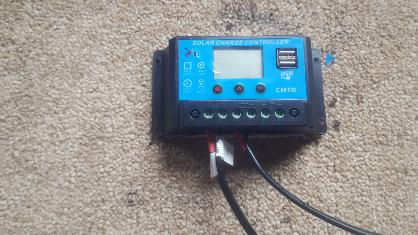
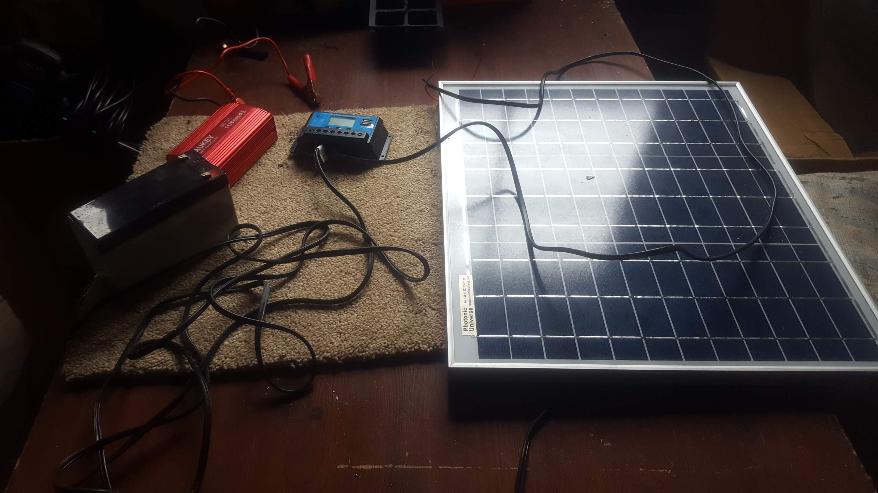
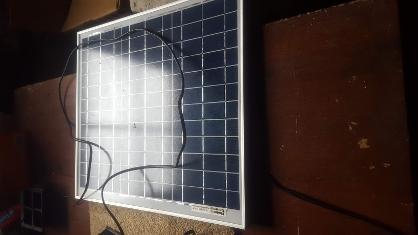
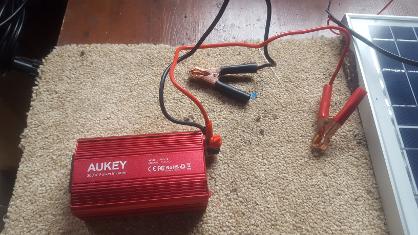
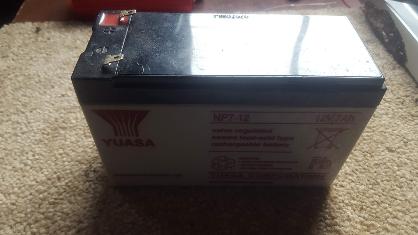
heat
This clearly depends upon what you are going to be using the heat for.
Essentially there are 3 possibilities we're aware of.
1 - to heat a building
2 - to heat water for washing / cleaning etc
3 - to heat / cook food.
Heating a building
Even when it is very cold outside, it is still a huge amount warmer than absolute zero and this "heat" can be harnessed / extracted from either the air or ground with an electric pump. The efficiency of these is generally for each KwH of electricity used you get about 4 or 5 KwH of heat extraction - so they are a great way of multiplying up the energy you use to heat a building to get to the temperatures you desire.
The name is on the tin with respect to what they do - air pumps extract heat from the air and ground pumps from the ground.
If we can generate the energy we are using for these pumps from a renewable source as well - then this is an extremely sustainably way to heat buildings indeed.
Saving Energy - how to use less
Of course the counter to generating our own power / heat is to need less of it. Probably the cheapest way to do this is to put insulation in the lofts of buildings, which is where most heat is lost and this can be done very cheaply. Generally it only costs about £5 / m square to do this with a thickness of about 200mm if done as a DIY job and will save this much in reduced heating costs in only 5 to 8 years.
Lots of other small changes can be made, LED light bulbs are massively more energy efficient, double glazing keeps the heat in far better, most electronic items are rated for efficiency - so take this into account when you need something new and simply turning things off when you are not using them will all both cut down on your carbon footprint and save you money in the long run.
We've created ourselves a small checklist of the major sources of energy waste to try to help us reduce this
(a) Set the thermostat a touch lower and put on a jumper if necessary (*)
(b) Get a smart meter (these are great so you can track what you use - but not available in all areas yet - including ours) (**)
(c) Ensure all lights are off when not in use (after changing bulbs to LED of course!)
(d) Change to using a laptop instead of a desktop - they are more efficient
(e) Turn off appliances where practical, rather than letting them sit on standby
* One good way to save energy is to make better use of your thermostat. We used to have this set to 21 centrigrade, but now have it set to 19, which actually saves a significant amount of energy. According to an article in the Independent newspaper, this could save as much as £150 per year (and with it a lot of carbon).
**There other thing that can be done with a thermostat is to change it from one of the old fashioned types to a smart one, which means that it can be programmed to make the property warmer when you are in and cooler when you are not, which is another way to save energy. The cost of these is about £100-£150 and will take a little while to pay itself back, but is more sustainable and will pay off in the end financially in the end as well.
Cooking
The first project we've tried is to heat food. Generally this is only possible in hot countries, or the peak of the summer in the UK.
To start with we tested the theory by literally using a cardboard box and tin foil to see if we could heat a pan. The result wasn't great and not enough to cook anything, but it did prove that by focusing the sun's heat we could raise the temperature.
So - we thought we'd spend a bit of money and purchased a cheap solar oven (for £20). This looks like a cool bag - but with a window in it, which you direct at the sun and it does the job of the box, but also traps the heat in after it is generated.
Although it is hard to see on here (because we deliberately kept the "indoor" part of the thermometer in the shade), it is read 16.3 centigrade.
The probe inside the oven is reading 47.1 centigrade, although the maximum we got that day was 50.3 / 17.1.
Clearly this isn't hot enough to cook, but it is a great way to get hot water when camping and with cooking starting properly at 65 centigrade, we'll come back to this as the UK weather warms up.
Last year (although we don't have photographic proof) we got over 80 degrees on days when it was 30 outside and we believe you could boil water in very hot countries near the equator.
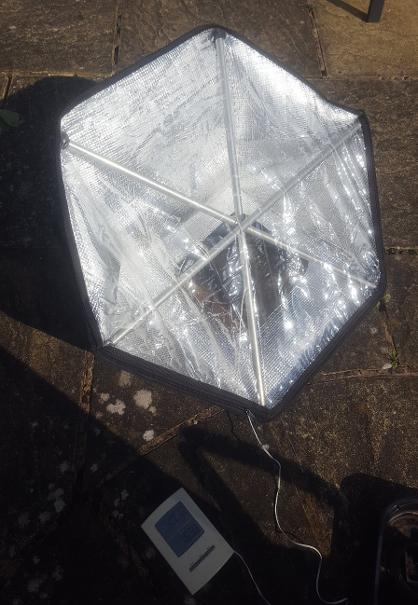
However, we weren't satisfied with this, so we took the plunge and bought a Rand Solar Oven, which is basically as test tube with a bung made of two layers of glass with a vacuum between them. You focus the heat from the sun on the tube using the reflector and it heats up the food inside. This has cost £125, which we estimate would require us to cook about 300-400 meals in it to be cost effective compared to our conventional hob and oven. However, the feeling of cooking without using anything other than free energy from the sun is priceless. We will let you know how we get on.
There are much more impressive solar ovens on the market, ranging up to £1000 or so, which we are sure will do a much better and get towards their advertised maximum temperature of 200 degrees centrigrade.
On a much larger scale solar dishes have been used to generate temperatures over 800 centigrade which then powers machinery to produce electricity, so the concept is one that works well.
This is the solar oven, with some chicken we cooked in it when the temperature was just 12 degrees centigrade.
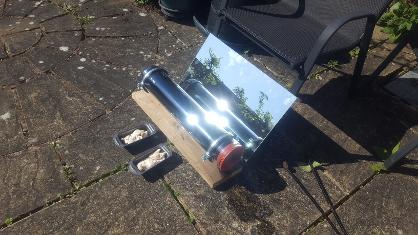
This image shows chicken we cooked in the oven, with the mirror behind, which reflects more solar energy onto the tube than having it on it's own.
We bought 3 small cake tins, which slide neatly into the oven and left this for about 45 minutes (with more reflectors it would be a little quicker), by which time the chicken was fully cooked (it was about 18 centigrade when this was taken.
Since this we've cooked eggs, jacket potatoes, broccoli, diced beef and even some small cakes. All with free energy!
The capacity of the tube isn't massive, but it will just about hold enough to feed our family of three.
Here's a video we made to show just how effective a solar cooker can be. We hope you like it.
For more information about the benefits and type of solar cooking that is available, see the article SLiCK have written for us here - it is great stuff.
